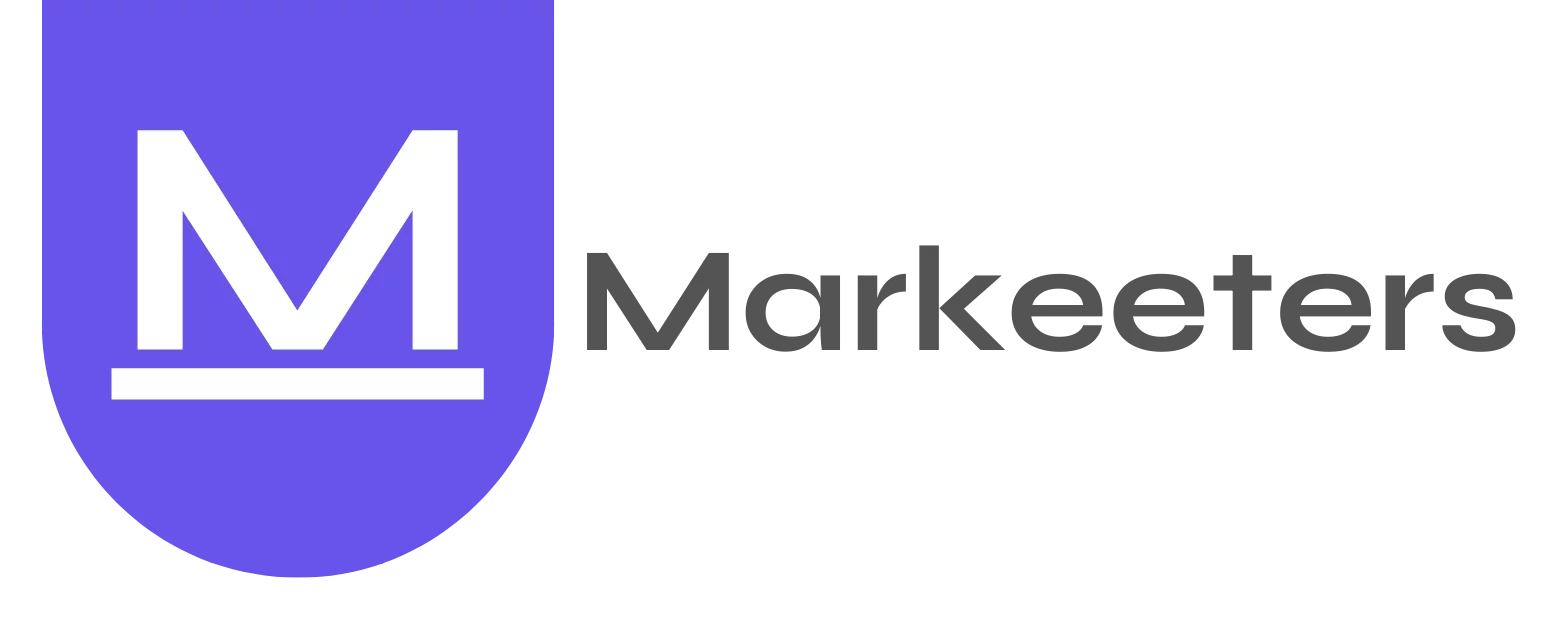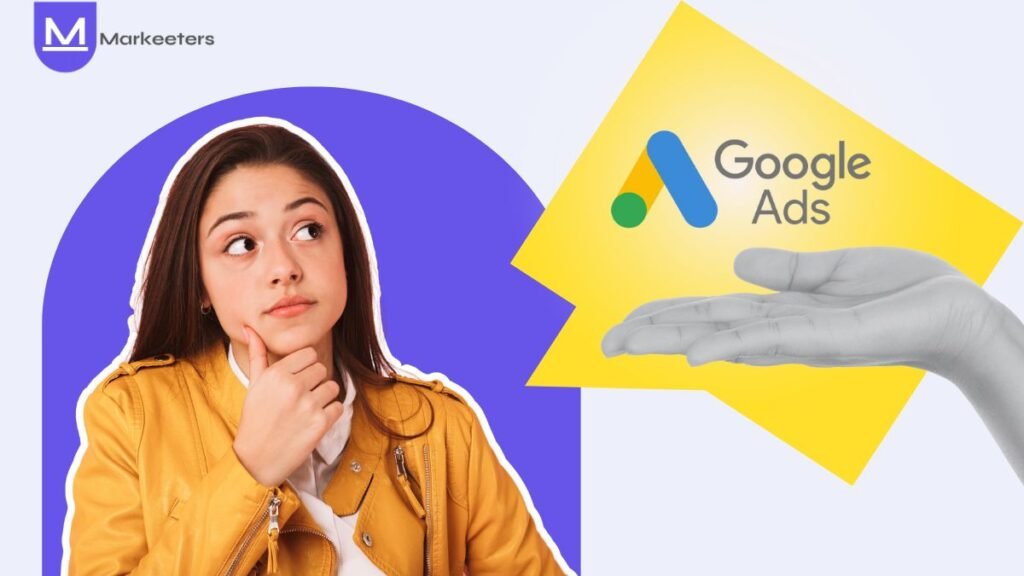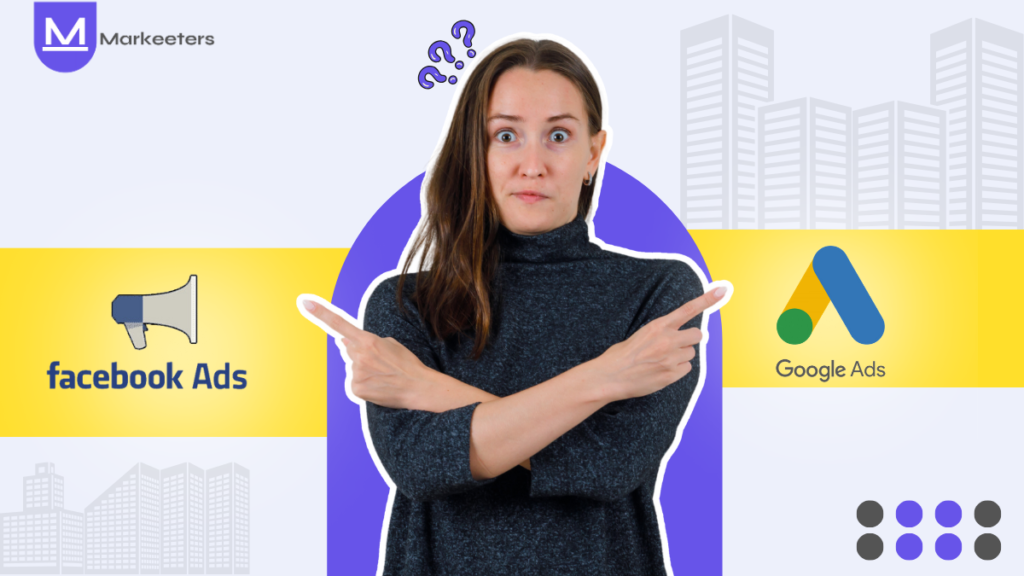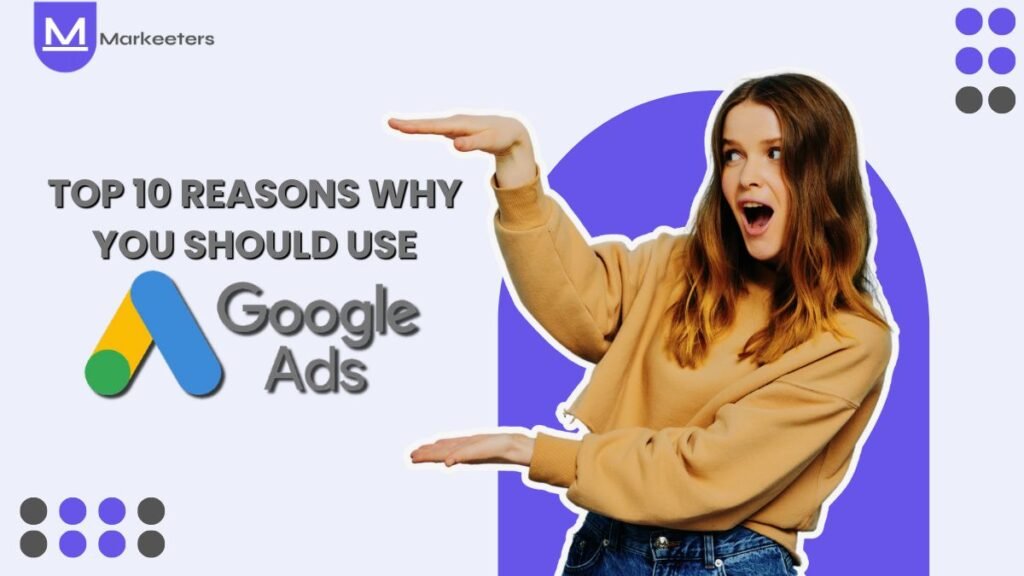Pay-per-click marketing refers to advertising models where businesses only pay when a user clicks on their ad. This is typically implemented through platforms like Google Ads and Facebook Ads, though can also include search engine and content network ads.
PPC marketing provides an opportunity for brands to get their messaging and offers in front of large audiences who have expressed actual interest through search terms and engaged content. It enables precise targeting down to the user level based on their searches, demographics, and behaviors. While an upfront cost is involved every time someone clicks an ad, PPC can be highly scalable – the more optimized the campaign, the lower the cost per acquisition.
For many businesses, PPC is crucial for lead generation, support of new product/service launches, driving awareness, and nurturing purchase intent across all devices. Done correctly, it allows pinpointing those most ready to buy right now versus passive display ads. The real-time analytics also provided by platforms like Google Ads make it easy to rapidly test variants and refine strategies to maximize conversion rates and ROI.
When leveraged intelligently as part of a multifaceted marketing plan, PPC opens the door to scalable growth opportunities that may be missed without an online presence. It deserves consideration as a key tactic for ambitious companies wanting to boost qualified traffic and sales.
What Opportunities Does Pay-Per-Click Marketing Present?
PPC is important for businesses because of the following opportunities it presents:
Rapid Testing & Optimization
While upfront costs are incurred per click, a major advantage is that PPC campaigns can be rapidly turned on and optimized over days or weeks to generate quick wins. Traditional advertising methods like print or TV usually have longer selling cycles.
Broad Reach
Bidding on paid search also allows casting a wider net to find in-market customers beyond over-target keywords typed on your website. You meet people where they’re already looking rather than hoping organic visibility brings them to you.
Local Edge
For local businesses especially, geo-targeted PPC helps compete with regional chains by showing ads to searchers near your storefronts. Proper location-based extensions can even list your hours, services, and driving directions directly in search results.
High Intent Buyers
Research consistently shows people searching online are higher intent buyers ready to learn more through paid ads versus passive display surfers. Leveraging platforms like Google to serve promotions for these already researching individuals drives some of the strongest ROI.
External Expertise
While self-managed options exist, many companies lacking in-house expertise find value in PPC agencies or consultants. Professional help speeds time to insights and maximizes the productivity of internal teams better deployed elsewhere.

Pay-per-click Marketing VS. SEO Marketing
PPC (pay-per-click) advertising involves bidding on keywords so your ads show up prominently in paid search placements or as display ads. You pay only when someone clicks. This allows quickly getting in front of customers but does have an ongoing cost.
SEO (search engine optimization) instead focuses on optimizing your website, content, and links to rank higher organically in search results without direct payments. However, ranking well takes longer as search engines evaluate relevance over time.
Comparison of Pay-per-click Marketing VS. SEO Marketing
Here is a table comparing some key aspects of PPC (Pay-per-click marketing) versus SEO (Search Engine Optimization):
| Factor | PPC | SEO |
|---|---|---|
| Costs | Advertisers pay on a cost-per-click basis, so costs are known upfront. | No direct costs – requires ongoing optimization efforts but does not directly pay search engines. |
| Speed to Rank | Ads can show immediately once a campaign is launched. | SEO takes longer as changes may take weeks/months to be reflected in organic rankings. |
| Control | Advertisers have full control over keywords, bids, placements, and ad creative/copy. | SEO efforts have less control as organic visibility relies on many fluctuating ranking factors. |
| Conversion Sources | Clicks come directly from ads and are easily measurable/attributed. | Organic clicks originate from search results and can be more difficult to attribute credit to SEO specifically. |
| Scalability | SEO relies more on ranking for intents/topics rather than pinpointing audience characteristics. | SEO improvements take hold gradually as content/links scale over the long tail rather than being instantly available at scale. |
| Audience Targeting | Precise audience targeting options available through keywords, placements, audiences, etc. | SEO relies more on ranking for intents/topics rather than pinpoint audience characteristics. |
How do PPC and SEO Work Together?
SEO is Superman – Ranking organically is superhuman, taking perseverance to reach the top through on-page optimizations and building trust over time.
PPC plays the role of Jimmy Olsen – Quick to respond to emerging challenges or gaps in coverage with spotlight-grabbing clickbait ads. But ultimately supports the Man of Steel.
Here are some detailed points on how PPC and SEO can work together effectively:
- Support each other’s goals – SEO improves organic visibility over time while paid ads drive immediate awareness and traffic for ranking factors. This flywheel boosts both.
- Test SEO topics via PPC – Use paid campaigns to test demand for potential long-tail keywords before committing website real estate/time to optimizing those pages through SEO.
- Refine SEO through paid insights – Analyze high-converting paid ad topics/queries to prioritize related on-site enhancements and off-site link building to rank for related organic searches.
- Bridge SEO gaps with PPC – Temporarily use paid ads to serve demand in areas where website/content is not yet optimized highly in search results through SEO.
- Retarget SEO traffic – Recapture organic visitors who didn’t convert through SEO by personalizing paid-to-retarget with their on-site behaviors and search history in mind.
- Leverage each other’s audiences – Custom affinity/in-market audiences from one channel can be imported into the other campaigns/placements for efficient prospecting.
- Measure true multi-channel impact – Attribute interactions from organic to paid and vice versa through tools like Google Analytics to understand complete customer journeys and ROI.
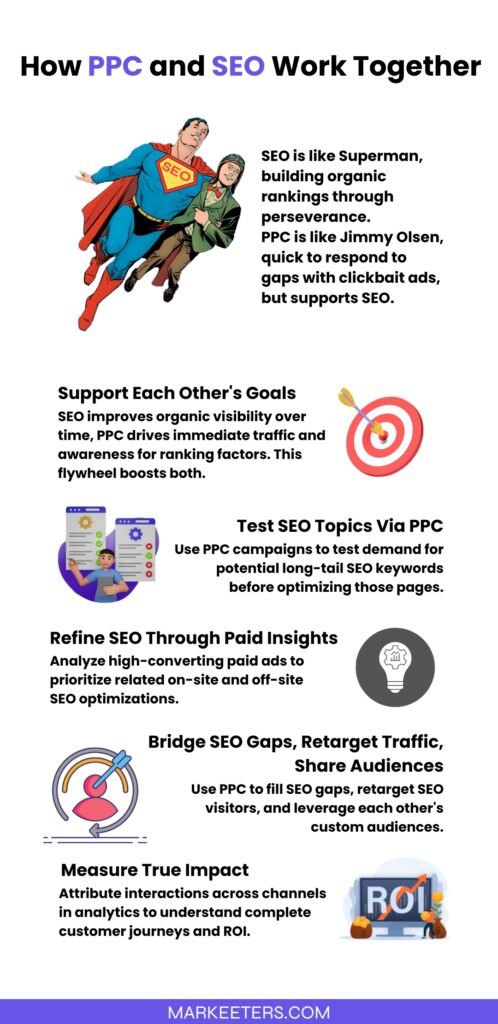
What are the Main PPC Ad Networks?
Here are the major paid search platforms available for advertisers to run campaigns on:
Google Ads
Google Ads (formerly AdWords) is the dominant force, accounting for over 90% of search traffic. Advertisers bid to display text or image ads alongside organic results on Google Search and partnering sites. Costs are based on keyword bids and quality scores measuring relevance/usefulness. Ads can link to landing pages, phone numbers, or map locations. Reporting gives granular data to improve performance. Google generated $224.47 billion in advertising revenue in 2022 through its Google Ads platform and is forecast to grow to nearly $340 billion by 2027. The search engine currently accounts for around 38 percent of total global advertising revenue.
Microsoft Ads (Formerly Bing Ads)
As the #2 search engine, Microsoft Ads (formerly Bing Ads) works quite similarly to Google Ads with comparable campaign, ad group, and keyword structures. Key differences include separate quality scores, lower traffic/CPCs generally, and an emphasis on visual advertising formats like image/video ads. It offers another avenue for incremental search exposure, especially appealing to marketers chasing local customers in less competitive niches. Microsoft’s search advertising revenue hit an all-time high in 2022, surging 67% to reach nearly $11.6 billion – up from around $6.94 billion the previous year. Its ad revenue totaled $12.21 billion in fiscal year 2023, a new high for the company.
Meta Platform Ads
These Facebook-owned platforms pioneered social media advertising, letting businesses promote organic posts or run standalone campaigns. Options span awareness ads to emotive native formats and collection/conversion objectives. Dynamic targeting based on interests/behaviors offers deep granularity. Their engagement metrics, audience insights, and story ad format introduce new performance tracking considerations versus search placings. Meta’s ad revenue exceeded $113 billion in 2022, representing the lion’s share of the company’s total revenue. The social media giant, formerly known as Facebook Inc, relies heavily on advertising to drive its business.
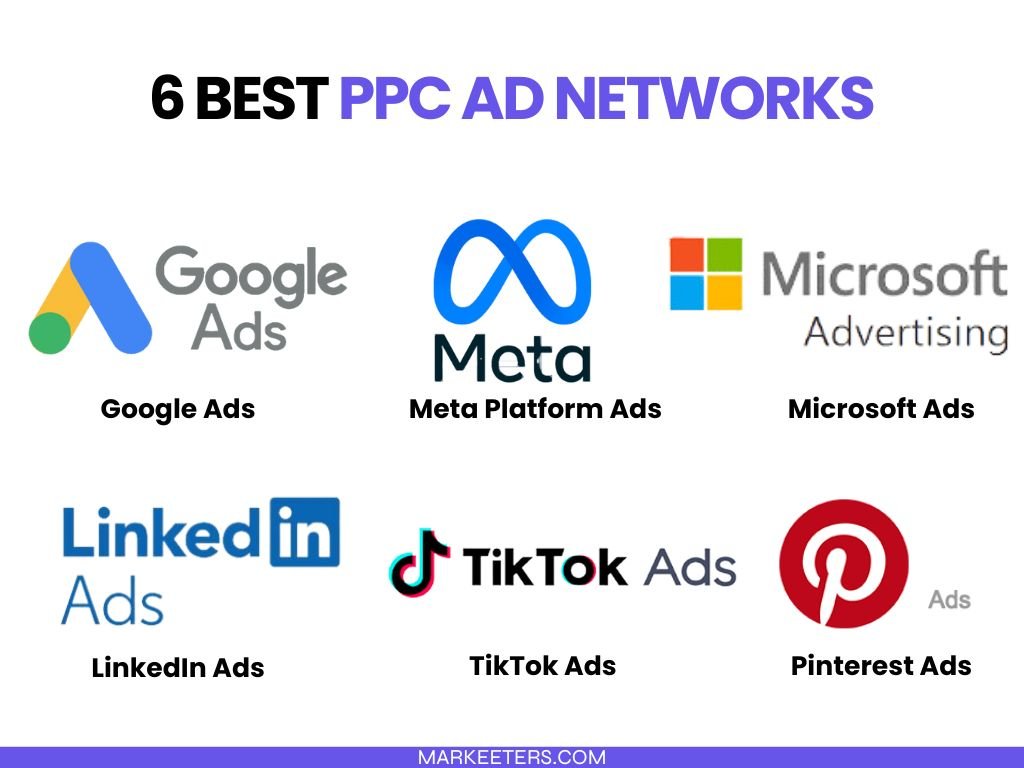
LinkedIn Ads
As the world’s largest professional network, LinkedIn Ads focus on converting business leads and talent. Campaign tools resemble Facebook Ads with granular targeting by job function, company, school, and more. Text, image, or dynamic formats align content to user profiles. Performance is commonly assessed via lead gen forms or page visits rather than clicks alone given LinkedIn’s B2B orientation. It proves effective for recruitment, thought leadership, and partnerships/strategic opportunities. LinkedIn’s ad revenue hit $5.91 billion in 2022 and is projected to surge 74% to $10.35 billion by 2027. The professional social network accounts for just under 1% of global advertising dollars despite its robust growth.
TikTok Ads
The exploding TikTok user base has fueled its rise as a promising new channel. Advertisers can run full-screen video ads, hashtag/profile challenge campaigns, or create TikTok ads through Facebook’s interface. Targeting is powered by interests/profiles. Early results show a strong recall lift for developing brand awareness. While measuring ROI takes experimentation, its popular short-form vertical format appeals to younger demos increasingly elusive in traditional media. TikTok’s ad revenue reached $4 billion in 2022 and is poised for massive growth, with projections to hit $8 billion by 2024 and $15 billion by 2026. The short-form video app is quickly becoming an advertising behemoth.
Pinterest Ads
An often overlooked but sizable network, Pinterest ads let you promote Pins to over 400 million monthly users searching for shopping inspiration, recipes, travel ideas, and more across 40k+ categories. Advertisers can target by location, demographics, interests, and Lookalikes. While still image-based, their stories-format ads have seen rapid engagement rises. Performance is tracked via outbound link clicks or App installs. Given its high purchase intent user pool researching products/services for offline shopping missions, Pinterest proves quite powerful for driving consideration and sales. Pinterest hauled in $2.8 billion in ad revenue in 2022, and projections call for an 82% surge to $5.1 billion by 2027. Still, the visual social network accounts for only 0.5% of global advertising dollars.
Types of PPC Ads
There are several different types of paid search ads that you can leverage in your PPC campaigns:
- Search text ads – These are the basic ads that show up on the search results page. You’ll want to create multiple headlines and descriptions to test.
- Display ads – When people are browsing websites or apps unrelated to their search, display ads can bring your business top of mind. Great for branding.
- Shopping ads – If you sell products online, shopping campaigns ensure your items appear in rich product snippets at the top of search results. Very high clickthrough.
- Video ads – Bringing your brand message to life through video engages users more compared to static images. Test across YouTube, Facebook, Instagram, etc.
- Discovery ads – Like display but focusing specifically on Google/Facebook’s video “channels” for highly relevant environments.
- Search partners – Get distribution to additional search properties beyond Google through their technology and monetization partners.
- Local services ads – For brick-and-mortar businesses, prioritize showing up for local search queries near your business locations.
- Call-only ads – Drive immediate phone leads by including click-to-call extensions directly in your ad text for contact-driven campaigns.
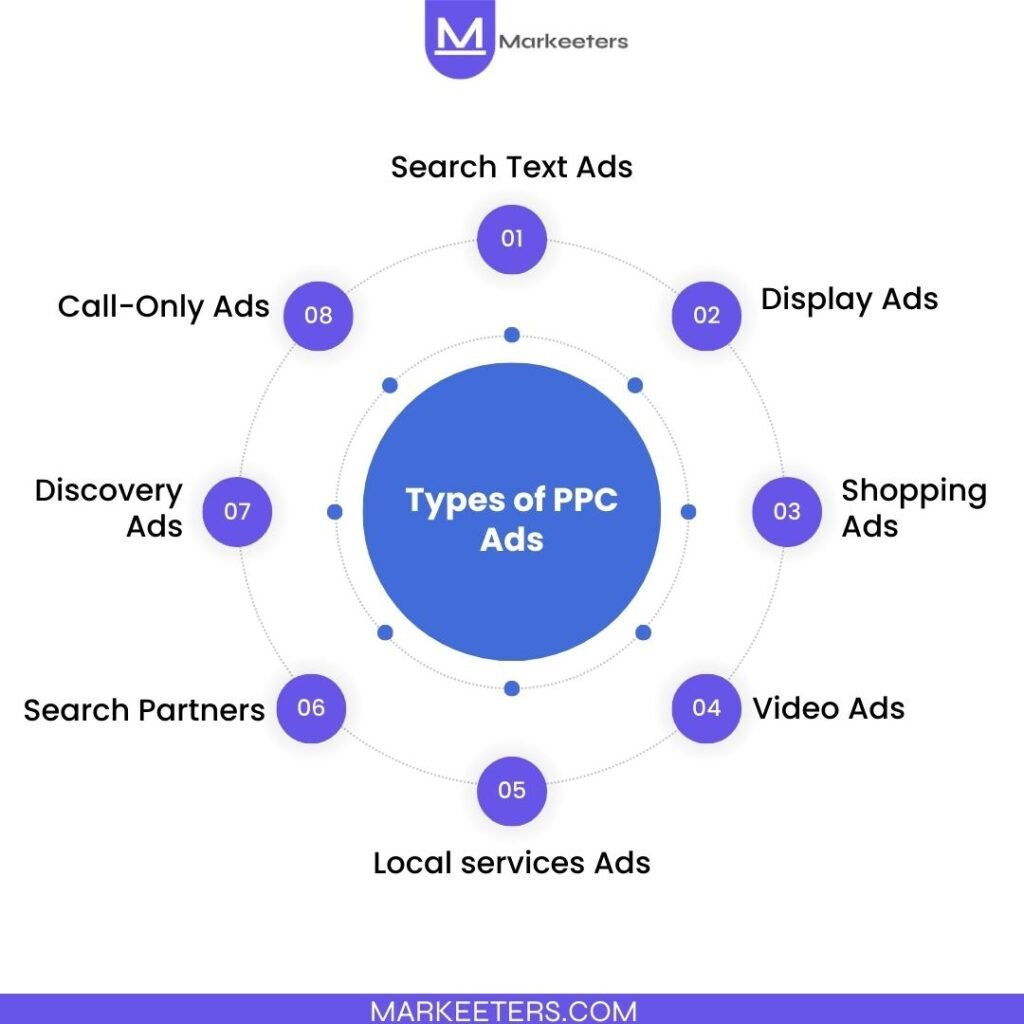
Setting Up Your First PPC Campaign
The first step is to create your online ads account by signing up on one of the major PPC platforms like Google Ads. You’ll be prompted to enter some key business details such as your company name, website URL, and physical location address. Make sure to carefully select the industry category that best matches your products or services from the options provided.
Once signed up, it’s time to build out your initial campaign. Choose a descriptive name for it such as “Q1 Sales Booster” so you can easily identify the campaign later on. Select whether your main goal is driving clicks to your website, generating leads, boosting phone calls, or getting conversions like online purchases. Then set your daily budget amount – start low, around $50 per day, until you get the hang of optimizations.
You’ll now add the first ad group which acts as a container for matching text ads and keywords. Name it based on the main product, service, or intent you want to target such as “Organic Lawn Care”. Input some seed keyword ideas that directly relate to that focus. Also, take note of any irrelevant keywords to exclude from your match types using negative keywords.
Next is writing your ads. In the limited character counts for headlines and descriptions, work to draw attention with compelling benefits while incorporating your main keyword. It’s a good idea to test out different creatives that showcase your unique value proposition through messages and visuals like high-res images. Be sure to upload any logos, icons, or store contact details needed for extensions.
To start building out your keyword list, enter exact matches of your seed terms along with relevant phrases and broad variations. Consider leveraging the automatically suggested keywords to find related search opportunities your sales team may have missed. You can then focus on geographical targeting by enabling or disabling certain states, cities, or countries.
Once ads and keywords are written, it’s time to optimize your campaign settings. Set a conservative daily budget spread across the week to start, perhaps $50 M- F. Choose between automated bidding types or manual CPC depending on your goals. Enable flexible features like day/time targeting too. Be sure to test different landing pages, creatives, and bid adjustments to gain insights and continuously improve performance over time.
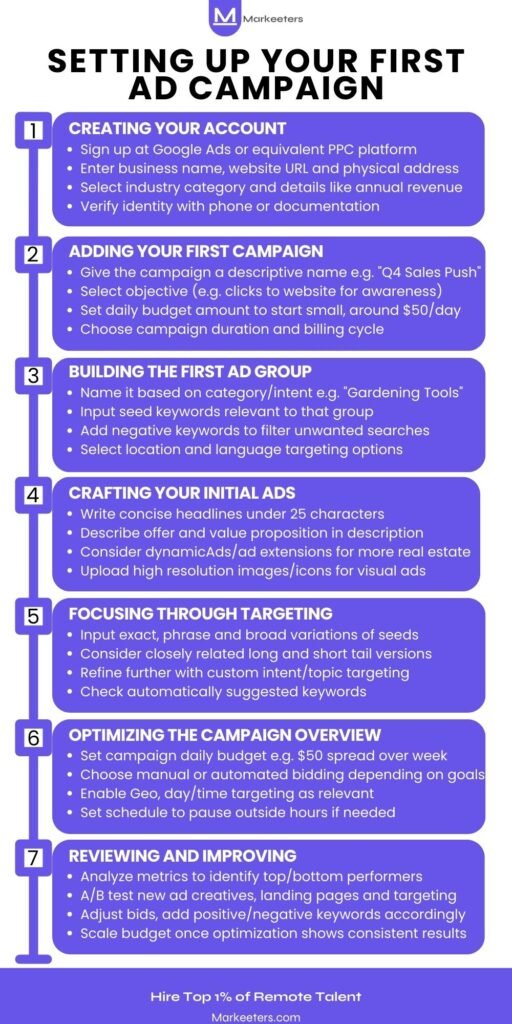
Keyword Research & Ad Targeting
Performing thorough keyword research is absolutely critical when setting up a new PPC campaign. After all, your ads need to serve people actively searching about problems or goals related to your business. Some of the best ways to discover untapped keyword opportunities start by analyzing what phrases your top competitors are bidding on in their own ads. You can also mine your existing website content and product listings for related keywords that customers may enter into search engines.
Tools from companies like Google, SEMrush, and Ahrefs make the research process much easier by showing monthly search volume numbers and trends over time. Their suggestions help you spot long-tail keywords that broaden your footprint. Be sure to consider the exact, phrase, and broad match types accordingly to catch all variations of your targeted keywords. This can significantly boost your total impression counts.
Once you have a solid list of relevant seed keywords, it’s time to focus on geographical targeting. Include any cities near your headquarters or stores in addition to your home location. You may also want to exclude certain areas dominated by competitors if budgets are tight. From there, layer in carefully selected filters for age, gender, parental status, and other demographics to sharpen messaging to ideal audiences.
Beyond the basics, don’t forget about robust interest-based targeting on platforms like Google and Facebook. Their Custom Intent segments group searches by motivations people commonly have such as “Home Improvement” or “Careers”. this behavioral data delivers highly qualified traffic aligned to your products or services. In some niches, leveraging Custom Affinities or in-market audiences packs even more potential customers into campaigns.
The more precision applied through the optimization of keywords and audiences targeted, the more their matching ads can convert leads efficiently.
Optimization & Measurement
Optimization is key to driving results from paid traffic on an ongoing basis. There are a few important metrics to track against your KPI goals:
- CPC (cost-per-click) measures the average amount spent for each ad click. Lower is better but quality also matters.
- CTR (click-through rate) shows a percentage of impressions generating clicks, oft 3% or higher for search.
- CPA (cost-per-acquisition) for conversions like leads or sales determines true efficiency. Divide the cost by actions.
- ROAS (return on ad spend) pulls it all together by comparing profits back to dollars outlaid. Scale spend where 2x or greater holds.
Some tips for optimizing PPC campaigns.
It’s important to constantly analyze your keywords and move poorly performing ones that aren’t earning their keep. You can expand this “prune & focus” approach by utilizing the automatic optimizations some platforms offer like broad match modifications.
Looking inside the search query report shows natural ways people describe problems or intentions that you may want to add as variations or new keywords. Let search data inform your ongoing expansions.
The gender, age, and location filters I mentioned earlier are also powerful for honing messages – for example if retirees convert best to a certain offer compared to younger generations shown the same creatives.
Call extensions allow including phone numbers in ad text for click-to-call functions, significantly boosting leads when It’s a good action for your business.
Offering discount coupons or promo codes on landing pages as a trial can increase conversion rates for testing – just be sure exit popups don’t alienate visitors.
On social platforms, remember to A/B test variables like video versus static images too, as certain ad formats may interact better for your products. Test and learn is the key!
Advanced PPC Strategies
Going beyond basic campaign setup and optimization, some advanced tactics advertisers can test to supercharge paid search results include:
Remarketing/retargeting to bring back website visitors
Remarketing tags visitors to your site so they can be followed by targeted ads on the retargeting network, reminding them of what engaged them initially. Retargeting boutique shoppers days later can provide a handy sales boost.
Search Partners/Shopping campaigns
Google’s Shopping campaigns allow product listings to show up in rich snippets/images right under organic results for relevant searches. This placement provides an immediate next step for online shoppers.
Video ads/Discovery campaigns
Video is stellar for developing life-long customer relationships through storytelling. Bid carefully though, as completion rates are lower than static images typically. Discovery campaigns on YouTube and Facebook autoplay videos while surfing to reach receptive audiences.
Converting PPC users into leads/customers
For lead generation, incentivize email opt-ins with a free quote or guide download on landing pages as the elevated next step from ads. Then nurture these warm leads via automated email sequences highlighting solutions.
Lookalike Modeling
Lookalike modeling expands custom intent retargeting by matching traits of high-performing traffic segments to introduce your offer to new suspect but aligned audiences at scale. This doubles down on proven pathways.
Common Mistakes to Avoid
Let me offer some key mistakes to watch out for that can drain budgets and undermine campaign performance:
Overly Broad Targeting
This is a very common issue. The key thing to remember is that paid search buyers are actively searching for a solution to their problem. Targeting keywords too broadly means your ads could show to people who aren’t really a part of your market.
For example, if you sell landscaping services, it’s tempting to target generic terms like “gardening” or “lawn care”. But most people searching for those aren’t ready to hire a pro. They may just want info or an equipment recommendation.
A better approach is to pair broad keywords with narrower ones. You could include “gardening” but position it behind more intent-driven searches like “hire landscaper near me” or “lawn mowing service [your city]”.
It also helps to base your keywords on your service areas and capabilities. For instance, don’t advertise tree removal if that’s not something you actually offer. People searching for that are just going to be frustrated when they contact you.
You’ll also want to rigorously use negative keywords to block out anything that is not a good match. Things like “gardening tools”, “fertilizer types”, or “weather reports and news” would filter out a lot of irrelevant clicks.
The goal is to qualify your prospective customers as early as possible based on their search queries.
Neglecting Audience Targeting
Many marketers fail to realize the importance of targeting the right customers for their products or services. Simply hoping broad placements will reach qualified prospects is usually not an effective strategy.
For example, imagine you run an accountancy firm specializing in small business tax returns. Throwing ads in front of general searches like “tax services” will get you plenty of clicks but most clickers are likely just individuals, not ideal clients.
A savvier approach is to find audiences you know are worthwhile using tools in Google Ads. You could identify business owners searching Google My Business listings or people reading articles on starting an LLC. These segments indicate stronger intent.
Retargeting is also crucial. Consider customers who visited your tax tips blog but didn’t complete an estimate form. Creating a search campaign focused just on retargeting these warm leads can generate quality new clients.
Analytics likewise present opportunities. If research shows dental offices are prime clients, launch ads within placements like dental practice management software sites.
In short, succeeding means deeply understanding prospects at each stage of the buying cycle. Target the right people at the right time with the right message to improve ROI dramatically versus attempting broad scattershot methods.
Poor Ad Creations
Many advertisers fail to recognize that search ads require a different creative approach than other formats. Pay-per-click ads need to quickly capture attention and communicate value in a short headline and description.
Some tips to avoid underperforming creative include:
- Keep headlines concise at ~7 words max while clearly stating the core benefit of clicking. Test including your brand vs. dynamic keywords.
- In the description, directly answer the question “What’s in it for me?” in the first 50 characters or users may not read further.
- Leverage ad extensions creatively when eligible. Calls or locations can be particularly compelling additions if relevant to searches.
- Consider breaking out headline tests into shorter vs. longer variants to see what generates more clicks from scanning users. Mobile real estate matters!
- Use dynamic remarketing to insert search terms visitors inputted before on your site to boost relevance and trust.
- Ensure visuals like logos or site links reinforce your value proposition for searchers in a way that motivates interaction.
- Analyze ad impression vs. click data to spot where copy or layout could be improved to raise interaction rates.
With paid search, succinctly resolving customers’ problems in the ads themselves is key – the landing page comes later.
Not Split Testing
One of the biggest mistakes an advertiser can make is not implementing split testing for their PPC campaigns. Failing to test variations means missed opportunities to boost performance.
Split testing involves dividing some of the campaign budget and traffic between two or more versions of an ad, landing page, or creative element to determine what performs best. This allows continued refinement and optimization.
Variables that should be tested include keyword match types, different ad copy angles, unique value propositions in the text, varying calls to action, and distinct landing page designs.
By A/B testing alternatives, advertisers can discover what resonates most with the target audience and move them further down the funnel. One variation often significantly outperforms the original through small tweaks.
Split testing provides the valuable insight needed to maximize effort efficiency and ROI. It ensures the campaigns aren’t leaving money on the table by remaining static instead of evolving to changing conditions.
A proper testing culture helps campaigns continuously thrive instead of plateauing. Any advertiser ignoring the power of split testing risks missing growth opportunities in their paid channels.
Not Tracking Conversions
Another big mistake advertisers make with their PPC campaigns is not properly tracking conversions. Without knowing where people are dropping off in the purchase funnel, it’s impossible to optimize and improve results.
Conversions should be tagged at each major stage – from awareness to consideration to purchase. For example, goals like form submissions, cart additions, and purchases.
This allows goals to be set in the ad accounts and connected to data in Google Analytics. With goals in place, reporting can reveal the typical path and where users tend to fall off.
It also makes bids and optimizations much more effective. Instead of just bidding on clicks, bids can focus on value – favoring ads and converting people further down the funnel.
Analytics then transforms PPC from just clicks to a full analyzer of the whole customer journey. Proper tracking provides the foundation for multiplying ROI through precise targeting of pain points and continual A/B testing of creatives and offers.
The bottom line is without conversion tagging, advertisers run in the dark without clarity on what’s working versus wasting budget. Goals are essential to understand where to invest efforts for growth.
Conclusion
To summarize our discussion on paid search advertising, there are a few main takeaways I hope have been helpful:
Thorough keyword research and laser-focused targeting are vital to reaching qualified prospects actively searching for solutions.
Optimization through ongoing testing and data analysis allows continuously refine your approach over time. There is no set-it-and-forget-it approach to high performance.
Leveraging all available formats like display, video, and shopping ads alongside core search campaigns provides more opportunities to engage customers.
Landing pages must provide a frictionless experience guiding visitors toward the desired goal, whether that’s a purchase, download, or contact.
Careful budgeting, negative keyword use, and metrics tracking help monitor efficiency to stay on top of evolving search habits.
What Next?
To get started, I recommend taking these next actionable steps:
- Brainstorm seed keywords and begin researching variations and volume trends.
- Set up your first search campaign and one additional format to test channels.
- Create several simple ads and landing pages to launch initial testing.
- Set modest daily spending and evaluate campaign performance regularly.
- Refine targeting, test new variables, and scale top tactics over time.
Turning Pay-Per-Click Into Profit-Per-Click
While pay-per-click advertising provides a valuable way to access interested customers, the key is ensuring every dollar spent translates to more than a dollar’s worth of revenue in return. Hire an expert paid search marketer to optimize your campaigns to convert paid traffic into profit-per-click.
We’ll start by analyzing your existing accounts to identify low-hanging fruit for improvement. Then our dedicated analysts will implement strategies discussed here such as rigorous negative keyword matching, custom audience modeling, and A/B testing to continuously refine your ads and messaging.
With data-driven insights, we can help reduce wastage and guide more site visitors down the sales funnel toward converting actions. By taking the guesswork out of campaign management, our performance marketing expertise works to boost your ROI quarter after quarter.
